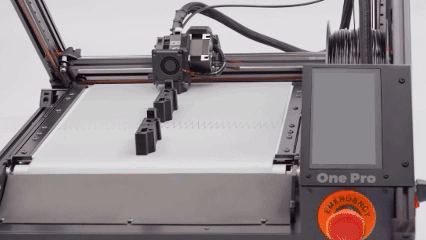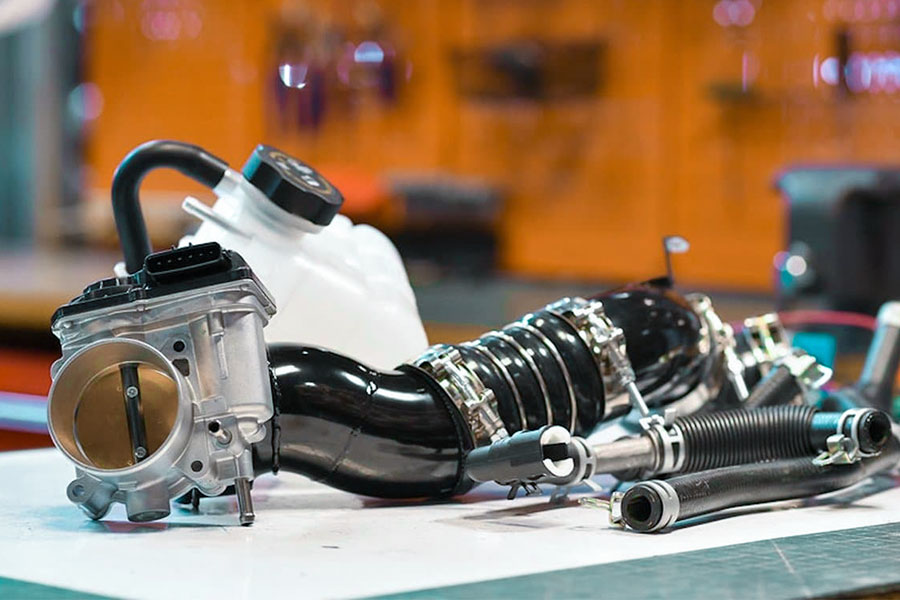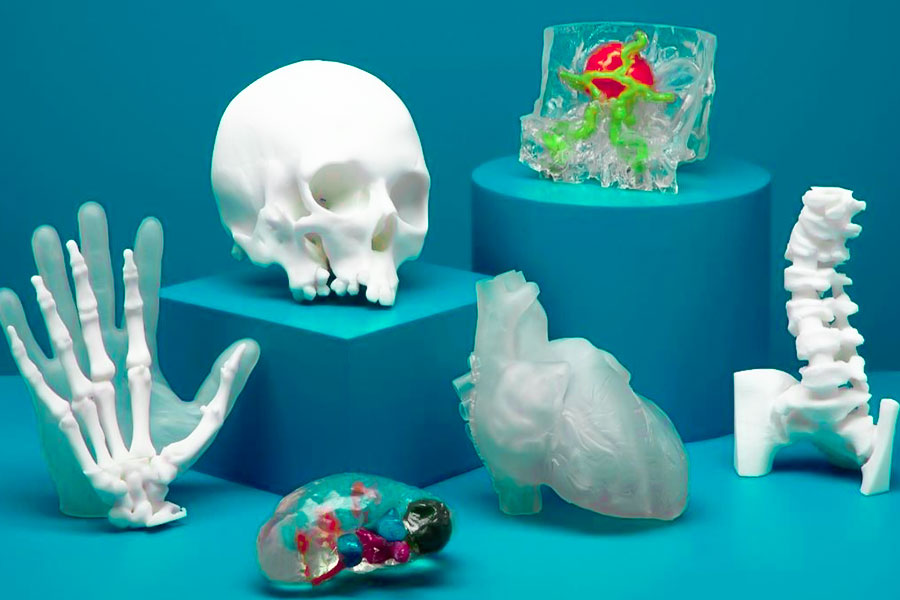In the background of product development cycles, rapid prototyping has become the core tool of cross industry innovation. By building prototyping model, designers and engineers can quickly validate design concepts, optimize functional details, and reduce development risks. rapid prototyping technology shows irreplaceable value in any industry. Its core strengths lie in compressing the traditional months-long design verification process into a few days, while supporting flexible molding of a wide range of materials, from plastics to metals. This technology drives the product to strike the optimal optimal balance between functionality, cost user experience experience.
With its cutting-edge CNC processing, 3D printing equipment, and cross-material integration integration capabilities JS company can quickly transform design concepts into solid prototypes. Through its one-stop shop, JS not only reduces trial and error costs by more than 50%, but also helps businesses achieve both cost savings and environmental protection through sustainable manufacturing solutions such as 95% material recycling rate.

What is the definition of rapid prototyping?
Rapid prototyping is a technique that verifies design concepts by quickly constructing three-dimensional models (such as rapid mockup). The core goal is to shorten product development cycles and reduce trial and error costs. The prototype meaning is not only in the rapid presentation of physical model, but also in the accurate matching of function and user experience through iterative optimization, so as to establish an efficient verification bridge between virtual design and physical manufacturing.
What materials are required for rapid prototyping?
In the field of rapid prototyping, the choice of materials directly affects the performance, cost and application scenario of the prototype. According to different design requirements, commonly used materials can be divided into the following categories:
- Plastic materials: Such as PLA, ABS, have the characteristics of convenient processing and low cost, suitable for appearance verification or basic function testing of rapid prototypes.
- Photosensitive resin: High precision, smooth surface, commonly used in dentistry or jewelry industry fine and rapid prototypes, supporting the formation of microstructures.
- Metal materials: Such as stainless steel and titanium alloys can be processed through metal 3D printing or CNC machining to meet the aerospace and automotive industry's demand for high-strength, rapid prototypes.
- Nylon material: Resilient and suitable for manufacturing rapid prototypes of removable parts or complex assembly structures, such as industrial equipment prototypes.
- Composites material: Such as carbon fiber reinforced nylon are a combination of lightweight and high strength and are widely used as prototypes for performance testing in new energy vehicles or aerospace.
- Silicone and wax molds: Silicone is used to simulate flexible components, while wax molds are used as casting mother molds for rapid prototypes connecting traditional processes.

What are the advantages of 3D printing in rapid prototyping?
1.Reduce the R&D cycle significantly
3D printing, which does not require traditional moulds or complex processing steps, converts digital models directly to physical prototypes, reducing the delivery time of rapid prototyping from a few weeks to a few days, and is particularly suitable for emergency projects or iterative verification needs.
2.Design freedom
Supporting shapes that are difficult to achieve with traditional techniques, such as complex geometric structures, hollow embeddings and irregular surfaces, gives designers more creative space during rapid prototyping.
3.Flexible production and controllable costs
Compared with traditional injection molding and opening mode, the production cost of single piece or small batch is greatly reduced, and the waste of resources is avoided. plastic prototypes, for example, can be mass-produced directly through FDM or SLA technology, saving over 90% of tool costs.
4.Diversified material adaptation
All-material systems covering everything from low-cost PLA to industrial-grade metallic powders meet the needs of different rapid prototyping scenarios. For example, photosensitive resin are used for high-precision appearance models, while metal alloys are used for mechanical performance verification.
5.Rapid iteration and validation
Allowing direct modification and reprinting of digital models on a single device enables an efficient cycle of design, print, test, correction, compressing traditional 5-6 iterations into 2-3, greatly increasing R&D efficiency.
6.Reduce material waste
The characteristics of on-demand consumer goods in additive manufacturing reduce waste by more than 70% compared to subtractive processing (e.g. CNC) and are therefore particularly suitable for environmentally demanding rapid prototyping projects.
How to apply rapid prototyping in the automotive industry?
In the automotive industry, the application of rapid prototype technology has become the core means to accelerate product development, optimize design verification and enhance competitiveness. Here's a look at its specific application scenarios and strengths in the automotive space:
1.Design validation and iterative optimization
Component models are quickly created by rapid prototyping techniques such as 3D printing and CNC machining to verify appearance design, assembly adaptability, and ergonomics. For example, JS provides prototypes of metal or plastic within 24 hours utilizing its high-precision CNC equipment (which supporting STL, STEP and other formatting) to help customers identify and correct design defects early on.
2.Functional and performance testing
The prototype can be used to test performance of engine engine components practical working conditions such as high temperature resistance and chassis structural strength verification. JS company supports a wide range of materials (including more than 50 metals and composites) that accurately meet actual production needs and ensure consistency between test results and mass production.
3.Reduction development cycles and costs
Traditional auto components development requires multiple mold iterations, while rapid prototyping reduces overall costs by shortening the test production cycle. JS Company delivers on time with 98% of orders (an average of 15% in advance), helping customers compress 15% of project time while optimizing processes and saving 20% in production costs.
4.Custom and small-batch production
JS company provides customized prototypes for high-end models or modifications to the market, supporting the entire process from CAD file upload (supporting formats such as DWG and IGS) to finished product delivery. Its automated production line can respond flexibly to small orders and maintain similar quality standards to traditional mass production.
5.Sustainable development practices
Rapid prototyping technology reduces waste during the development of traditional die. JS company achieved a 20% reduction in waste and 15% reduction in energy consumption through recycling materials and energy-efficient equipment, in line with the automotive industry's green transformation.
JS company's core advantages in the field of rapid prototyping
| Application scenarios | Technical means | Advantages of JS Company | Example of Achievements |
| Concept validation model | 3D Printing (SLA/FDM). | Support STL, GLB and other file formats to deliver simple prototypes within 24 hours. | Prototype production of battery pack shell for customer electric vehicles. |
| Engineering validation prototype | CNC precision machining (aluminum/steel parts). | ±0.005mm ultra-high accuracy, covering more than 50 materials, meets functional testing requirements. | Pressure testing of fuel injection system parts. |
| Pre production before mass production | Injection mold rapid prototyping. | Mold development of 1-2 weeks, compared to traditional methods, 20% lower cost, suitable for small batch mold up to 500 pieces. | Pilot production of self-driving sensor housing. |
| Sustainable solutions | Verification of recycled materials. | Production of recycled plastic/metal prototypes with traceable carbon emission data. | Prototype testing for lightweight hybrid cars. |
Successful Cases of JS Assisting the Automotive Industry
Prototypes for new energy vehicles: 3D printed in aluminum alloy, from design to physical verification, completed in 7 days, with 92% pass rate for strength testing, 40% lower than traditional mold manufacturing costs.
Autonomous driving LiDAR bracket: A lightweight carbon fiber composite prototype is implemented through CNC machining, and vibration testing shows a threefold increase in fatigue life, supporting mass production decisions.

What prototype technologies are commonly used for medical devices?
1.CNC prototyping: Prototype orthopaedic implants
- CNC machining can be used for medical components requiring mechanical performance verification by cutting titanium alloys, stainless steel and other metal materials with high precision to manufacture prototypes with complex structure and large tolerances (±0.005mm).
- JS case: A prototype hip prosthesis developed by an orthopedic enterprise in collaboration with JS uses titanium alloy material for micrometer level hole positioning and surface treatment through five axis CNC machining. The JS team completed the offer within 24 hours and delivered the prototype within 10 days. The material has passed ISO 10993 biocompatibility certification and can be used directly in animal experiments.
2.3D printing prototyping: A guide to dental models and surgery
- Photolithic 3D printing (SLA/DLP) supports medical resin materials and enables rapid prototyping of transparent or structurally sound prototypes suitable for dental prostheses or surgical navigation templates.
- JS case: A dental hospital commissioned JS to print custom implant guide plates using medical grade photosensitive resin. The prototype surface roughness (Ra<0.8μm) meets the requirement of precise positioning. JS can receive STL files through the cloud, complete printing and post-processing in 72 hours, helping doctors reduce surgery planning time by 40%.
3.Injection molding: Rapid trial manufacture medical consumables
- Injection molding is suitable for small-scale production of plastic components such as infusion device casings and ventilator tubing, and JS enables low-cost and efficient prototyping through rapid mold development (1-2 weeks).
- JS Case: A ventilator manufacturer needs to test the sealing performance of new face mask. JS uses a molding prototype of medical ABS materials, combined with automation equipment, to complete 100 test products in 5 days. By adjusting the mold design, the sealing of the prototype has reached the standard and the engineering cycle has been shortened by 30%.
Core values JS company's medical prototype project
- Fast iteration: Using a combination of CNC and 3D printing, customers shortened the product design cycle from the traditional 6 weeks to 2 weeks, bringing it to market early.
- Compliance assurance: All prototype materials comply with FDA or ISO standards, reducing the risk of future certification.
- Cost and speed balance: Through process optimization, saving customers an average of 20% of manufacturing costs, 98% of orders delivered on time.

What are the key points of consumer electronics prototype verification?
In the development of consumer electronics products, prototyped is the core link to verify design feasibility, optimize user experience and reduce production risks. The main verification directions and technical elements are as follows:
| Verification direction | Technical means | Core materials | Application scenarios |
| Structure verification | CNC machining/3D printing. | Aluminum alloy, photosensitive resin. | Mobile phone casing, wearable device assembly. |
| Functional testing | Circuit integration+environmental simulation. | PCB module, flexible silicone. | Smart watches, IoT devices. |
| User Experience Evaluation | Wearable prototype+blind testing feedback. | TPU, liquid silicone gel. | Earphones, wristbands. |
| Production feasibility verification | Silicone replication/rapid prototyping. | ABS, PC. | Home appliance panels, automotive interior parts. |
| Compliance pre inspection | Material toxicity testing. | Medical grade silicone, TPU. | Medical devices, children's electronic products. |
Prototyping validation enables consumer electronics developers to identify design flaws before mass production, optimize user experience, reduce compliance risks, and ultimately achieving efficient closed-loop design, validation, and mass production. For example, a brand iterates a prototyped to shorten the launch cycle of a new product by 30% and rework costs by 25%.

Will artificial intelligence change prototype development?
Artificial intelligence is profoundly changing the way rapid prototype work, dramatically increasing efficiency and expanding possibilities through data-driven, automated, and intelligent analytics. Specific reform directions are as follows:
1.From experience-driven to data-driven
- Generative design: Artificial intelligence algorithms can automatically generate thousands of rapid prototype based on input parameters (function, material, process limitations). For example, when entering the fuselage of a light drone, AI integrates strength, heat dissipation, and weight requirements to output optimal structural design, which is much more efficient than manual iteration.
- Topology optimization: Artificial intelligence combined with finite element analysis(FEA) automatically optimizes the internal structure of parts (such as the distribution of weight loss holes), reducing material waste by more than 30% while maintaining performance of a rapid prototype.
2.Shortening the development cycle
- Automated Modeling and Simulation: Artificial Intelligence converts text requirements into 3D models, such as input heat-resistant industrial sensor housing, through natural language processing. AI generates editable STEP files directly, reducing manual modeling time by 70%.
- Intelligent prediction and verification: Before physical prototypes are produced, AI can simulate extreme working conditions (such as high and low temperatures, vibration testing) and detect design defects in advance. Rapid prototype of consumer electronics optimize their structures through virtual drop tests, reducing the number of physical samples by 50%.
3.Interdisciplinary intelligent optimization
In the development of complex products such as medical devices and smart hardware, AI can simultaneously optimize cross-cutting parameters such as mechanical structures, electronic circuits, and material properties, ensuring that rapid prototype achieve the best balance between functionality, reliability, and production costs.
4.Intelligent simulation and testing
Artificial intelligence-driven simulation technology can predict prototype performance in virtual environments and reduce the number of physical tests. For example, by simulating the fatigue characteristics of a machine learning material under different working conditions, the validation time of a rapid prototype can be reduced by 70%.
5.Man-machine collaborative innovation
Artificial intelligence can act as a design assistant, providing real-time optimization advice and helping engineers quickly adjust solutions. For example, in CAD modeling, artificial intelligence can automatically detect interference or stress concentration issues, making the development of rapid prototype more accurate.
Which industries benefit the most from JS's 1-2 week prototype delivery cycle?
1.In the area of medical equipment
- Demand pain points: Efficient development medical prototypes, such as surgical instruments and implants, is required to meet clinical trials and urgent needs.
- Technical Advantages: JS precision manufacturing technology is suitable for medical grade titanium alloys and polymer materials and complies with ISO 13485 and other medical quality system certifications.
2.Aerospace industry
- Core requirements: Aircraft structures must meet the lightweight design of TC4 titanium alloy/carbon fiber composite materials and the tolerance requirements requirements of AS9100D.
- Solution: Accuracy of ±0.01mm dimensions, support of 48 hours of rapid sampling, and airworthiness certification testing based on JS five-axis processing technology.
3.New energy vehicle manufacturing
- Technical value: JS rapid prototyping technology can shorten the development cycle of key components such as battery trays and sensor housings, and reduce verification costs by 30% compared to traditional methods.
- Quality control: ±0.005mm machining accuracy combined with heat treatment process to ensure dimensional stability of new energy vehicle components at -40°C to 150°C.
4.Consumer electronics industry
- Market Reaction: Prototypes of concepts such as smartphone frames and headphone structural components were completed in 1.5 working days using a combination of materials such as aluminum alloy/PC/TPU.
- Design freedom: Supports processing of 0.5mm thin-walled parts and hole arrays to achieve seamless transition from product ID design to functional prototypes.
5.Robots/Automation equipment
- Productivity: For customised components such as collaborative robot grippers and machine vision shells, CNC precision machined parts can be delivered in 72 hours, 60% faster than traditional manufacturing.
- Accuracy guarantee: Equipped with a closed-loop compensation system, ensures ±0.003mm repetitive positioning accuracy and meets 0.01mm horizontal motion control requirements for the 6-axis robotic arm.
Summary
Rapid prototyping technology has revolutionized the traditional product development model, rapidly transforming ideas into physical models through efficient and flexible methods. Deeply understand prototyping meaning, that is, through iterative functional models and optimal design, so that enterprises greatly reduce costs, shorten the time to market, promote innovation.
Whether in manufacturing, healthcare, or consumer goods industries, rapid prototyping allows teams to quickly iterate and accurately respond to market demand. With the development of technology, the application scope of rapid prototyping will be expanded, further consolidating its position as a key link in modern design and production process.
Disclaimer
The content on this page is for general reference only. JS Series makes no express or implied warranties regarding the accuracy, timeliness, or applicability of the information provided. Users should not assume that the product specifications, technical parameters, performance indicators, or quality commitments of third-party suppliers are completely consistent with the content displayed on this platform. The specific design feature, material standards, and process requirements of the product should be based on the actual order agreement. It is recommended that the purchaser proactively request a formal quotation and verify product details before the transaction. For further confirmation, please contact our customer service team for professional support.
JS Team
JS is an industry leading provider of customized manufacturing services, dedicated to providing customers with high-precision and high-efficiency one-stop manufacturing solutions. With over 20 years of industry experience, we have successfully provided professional CNC machining, sheet metal manufacturing, 3D printing, injection molding, metal stamping and other services to more than 5000 enterprises, covering multiple fields such as aerospace, medical, automotive, electronics, etc.
We have a modern factory certified with ISO 9001:2015, equipped with over 100 advanced five axis machining centers to ensure that every product meets the highest quality standards. Our service network covers over 150 countries worldwide, providing 24-hour rapid response for both small-scale trial production and large-scale production, ensuring efficient progress of your project.
Choosing JS Team means choosing manufacturing partners with excellent quality, precise delivery, and trustworthiness.
For more information, please visit the official website: jsrpm.com
FAQs
1.Which industries require high-precision prototype?
Industries such as healthcare (implants/devices), automotive (safety verification), aerospace (lightweight components), robotics (precision transmission) and consumer electronics (microassembly) require high-precision prototypes to meet stringent safety, performance and functional standards.
2.What is the core technology of rapid prototyping?
Including additive manufacturing (3D printing), high-precision CNC machining, precision mold injection molding, automation software integration, combining digital simulation and materials science to achieve rapid iteration and high-precision validation.
3.How to optimize prototype design?
CAD/CAE simulation used to validate structural strength and thermodynamic performance, phased iterative development, precise matching of materials (metal/plastic/composite), collaborative design across sectors, data-driven parameter adjustment, combination of lightweight and standardization, balancing accuracy and cost, and prioritizing the use of recyclable materials.
4.Can complex structures be formed as a whole?
Complex structure can be integrated by 3D printing and multi-axis numerical control to reduce assembly errors and improve overall performance.
Resources






